Employee Spotlight: John Henley + Nicholas Lott
This month’s employee spotlight shines on two members of the ESa team, John Henley and Nicholas Lott. Read on to learn about their unique roles at ESa, their creative process/inspiration and their tips for aspiring artists and designers.
Images/sketches throughout provided by Nicholas Lott
Breathing Life into Design
Design manager, John, and visualization team member, Nicholas, are part of ESa’s incredibly talented project and visualization teams, respectively. They create renderings that breathe an additional layer of life into designs, allowing both our clients and our internal architecture teams to see and experience designs before they exist in the physical world.
As a design manager, John spends the majority of his time at the beginning of a project, working with teams to develop initial designs and concepts. His favorite part of the job is designing a building’s exterior. “When I think of my favorite projects, Mary Bridge Children’s Hospital comes to mind. We went through several iterations of the exterior design, and I am happy with the final product. I think it is a great fit for the Tacoma community,” John shared. His passion stems from seeing projects and designs come to life.
As part of the Viz team (shorthand for visualization team) Nicholas works on renderings for all of our projects. Viz team members meet with the design teams who requested the rendering to gain a deeper understanding of the request and the overall vision for the rendering. Nicholas utilizes a hands-on approach for the meetings that he believes is critical for an in-depth and accurate understanding of the work on hand, which can vary in format. “We go over exactly what they need from renders, to floor plans, sketches, concept art and even graphics or possibly a portrait of someone,” Nicholas shared.
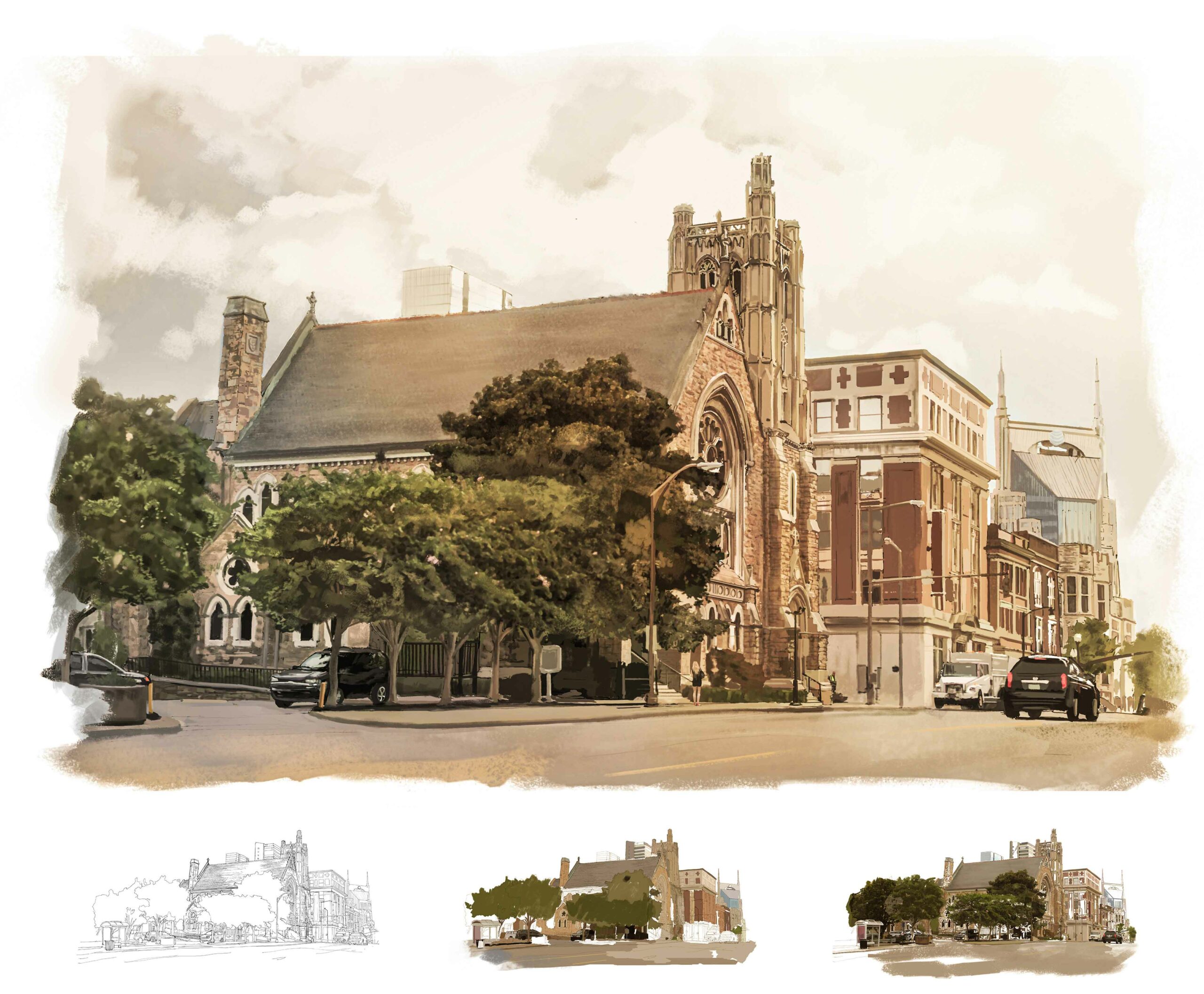
For Nicholas, his favorite part of the job is being able to visualize projects and work hand-in-hand with the talented design team on the architecture side. “I also love working really hard to realize or draw something and then having the client, project manager, architect and/or interiors team members get excited about the images we develop,” he shared. Overall, Nicholas loves working with the Viz team. “The people on the Viz team are the best, and I have made some great friends here,” he says.
Drawing Inspiration
For John, he draws inspiration from his children. “Their curiosity and approach to the world is awesome,” John shared. “To them everything is new and exciting. I hope to capture a fraction of that enthusiasm in my artwork,” he shared. He keeps his kids’ drawings at his desk for inspiration and is more than happy to share them with others, so stop on by if you get the chance.
John also finds inspiration in his parents. “Both my parents are creative. My dad was always working on things at night throughout the week, and on weekends. He would draw portraits, caricatures, buildings or animals. He was multi-talented and could create amazing gauche paintings, watercolors, sculptures and logos. My mother did calligraphy and framed photos,” John shared. Growing up in this artistic environment made him feel as though anything was possible. Fun fact, John’s father, Ken Henley, is also a part of the ESa family having worked here for 24 years.
For Nicholas, inspiration takes many forms, such as a good movie, the more cinematic and epic, the better. He believes that a great visual movie can be one of the highest forms of art, and as a result, he enjoys drawing movie frames. When asked to give an example he offered up “Blade Runner 2049,” a movie that made him hit the pause button multiple times to examine each frame in more detail. He also highly recommends a podcast called “Every Frame a Painting” that breaks down great shots in movies as a way to gain inspiration and new a perspective.
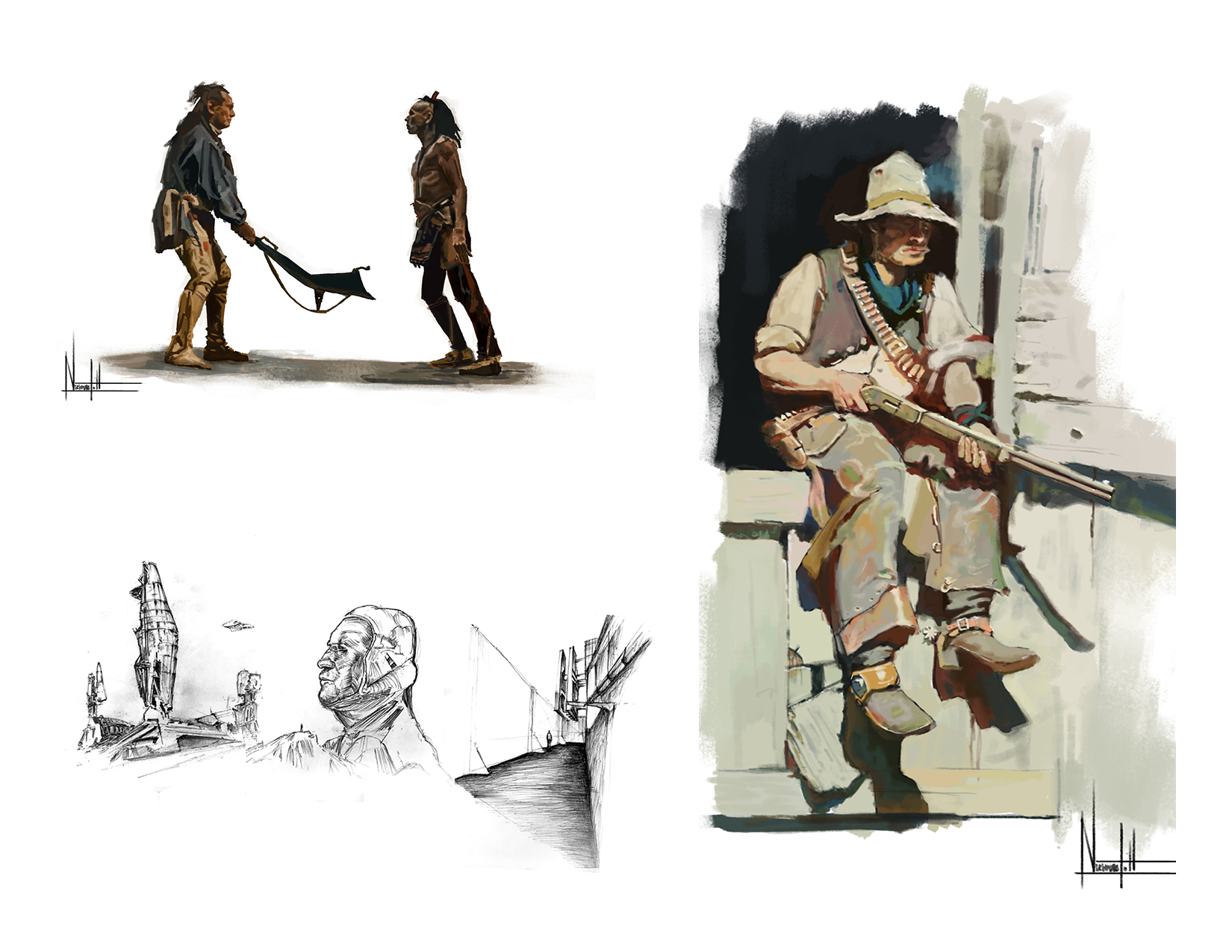
Tips for Aspiring Artists/Designers
Coming from a family of artists, John has been drawing as long as he can remember. “For me it really is an everyday thing,” he shared. For new artists, John believes that the faster you can accept or let go of the idea that the drawing you are working on is never going to look the way you have it pictured in your mind’s eye, you will grow. He recommends that you don’t compare your sketch to someone else’s. The power of a sketch is to see through the eyes of someone else, to get a glimpse at their perspective. Everyone interprets things differently and this helps to create and start dialogue that influences projects positively.
“I always liked drawing, but I never thought I had any great talent,” Nicholas shared. “Honestly, talent is overrated; persistence and passion triumphs over talent every time,” he said. He treats an artistic endeavor comparable to going to the gym or practicing an instrument. “Set aside 30 minutes every day and just sketch,” he recommends. Do that for 30 days and then look back at your early sketches to see your progress. He also recommends tutorials that are available online, including a series of videos by James Gurney and Scott Robertson, two of his favorite artists.
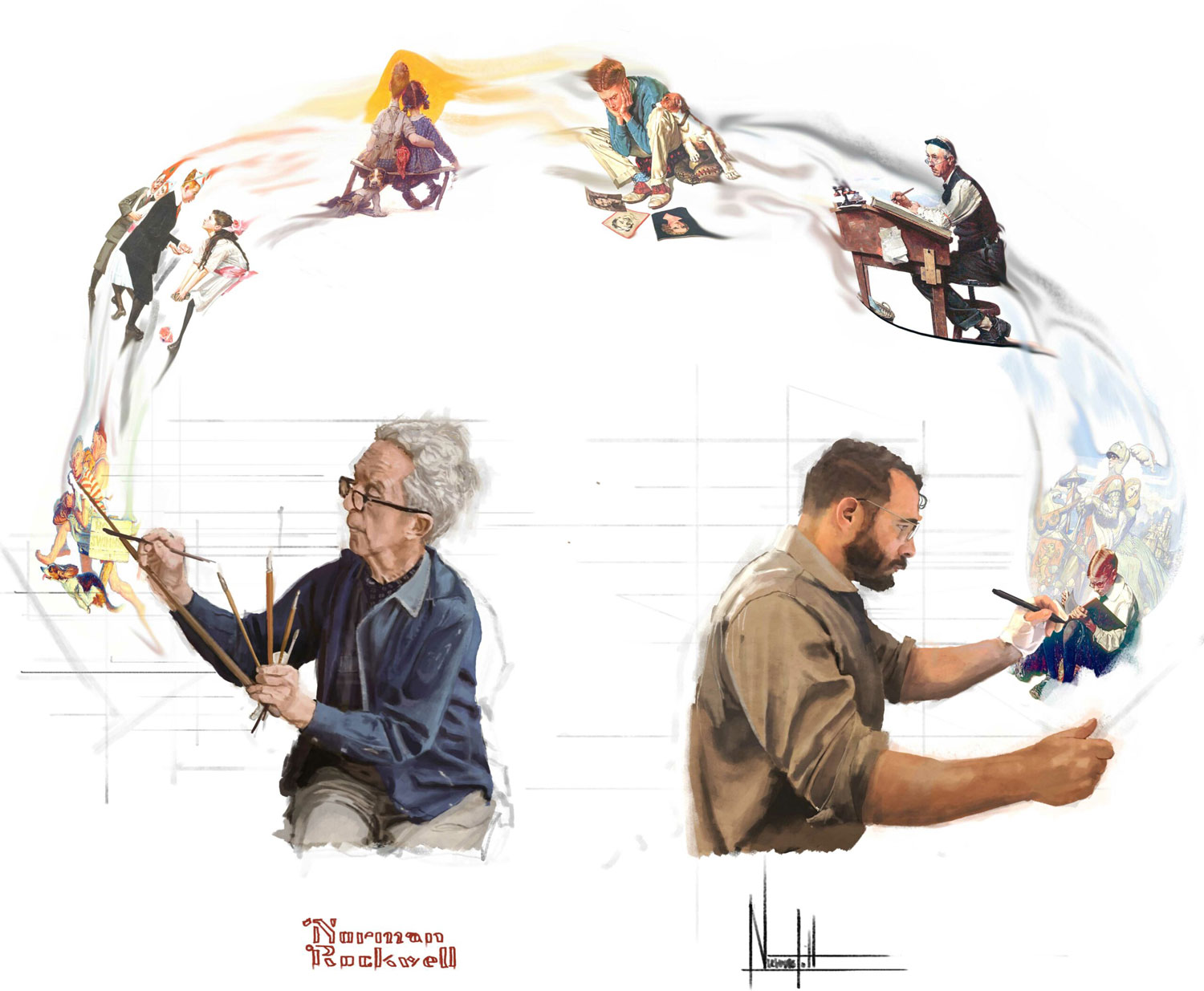
Developing perspective and a habit of sketching daily can be difficult, and within the arts community, competitions and events have been created to encourage these habits. One that both John and Nicholas have participated in is Inktober, a sketching challenge that occurs every October. Jake Parker, a New York Times bestselling illustrator, popularized Inktober in 2009 as a challenge to improve his inking skills and develop positive drawing habits. This was picked up my artists the world over, and has since grown into a worldwide endeavor with thousands of artists taking on the challenge every year. Each day during the month of October, there are new prompts for artists to follow/interpret. While it was originally founded for traditional sketching via ink, other means of creation are also encouraged.
John has participated in Inktober in years past, and “relishes the challenge of a blank page every day, and the various prompts make it a lot of fun.” He enjoys drawing and exploring concepts that he otherwise may not have thought of before.
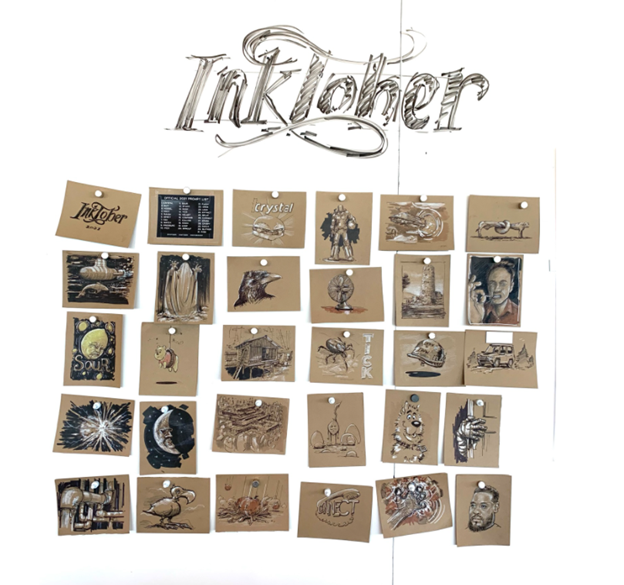
Nicholas also enjoys the challenge of Inktober and believes that the use of ink as a medium is one of the best learning tools artists can utilize. “With pens and ink you are basically describing the subjects in your drawings with just line. Sketching with pencil is great, but you can get by with shading to hide a lot of information,” he explains. “Drawings are abstractions and simplifications of what your eye sees, and the pen forces you to not only simplify but to also not re-draw,” he added. “The permanence of the medium of the pen exposes the artist’s mistakes and you cannot hide behind erasing.”
Nicholas also enjoys how Inktober is flexible. “This year I know of many people that did this challenge with different media; maybe one time it is a pen and the next a water color or pencils. This is compelling because it exposes you to various mediums,” he says. To Nicholas, sketching is important, it is a way of thinking with the hand without really thinking and a central design tool used for communication.

Rapid Fire Round
What is the story of how you joined ESa?
John – My journey to being full time at ESa started with an internship. I interned with ESa during college, and later joined the Viz team full time after graduating. Eventually, I would leave ESa to pursue other work and learned some lessons along the way. Much of this previous work was incredibly fast-paced and involved high-demand with multiple deadlines in a given week. It pushed me to create and problem solve quickly and I gained knowledge of how long it actually took me to produce something. While I was able to learn a lot and work with some amazing brands, I ultimately returned to ESa because of the people.
Everyone here takes care of each other. It feels genuine, not superficial. The people at ESa push me to grow and to do better every day. I am challenged here in a positive way. I have a good laugh with people here. I hope to add to and continue to nurture what makes this place so special. ESa is unique from other companies for the way it honors the past, innovates in the present and looks to the future.
Nicholas – I heard about ESa from a schoolmate that worked at the firm. I spoke with the then head of the visualization team, and had a meeting with the rest of the team. After meeting everyone, I got the feeling that ESa was the place for me.
How long have you been with ESa?
John – In my current role of design manager, I have been with ESa for a year and a half.
Nicholas – I have been with ESa for four and a half years.
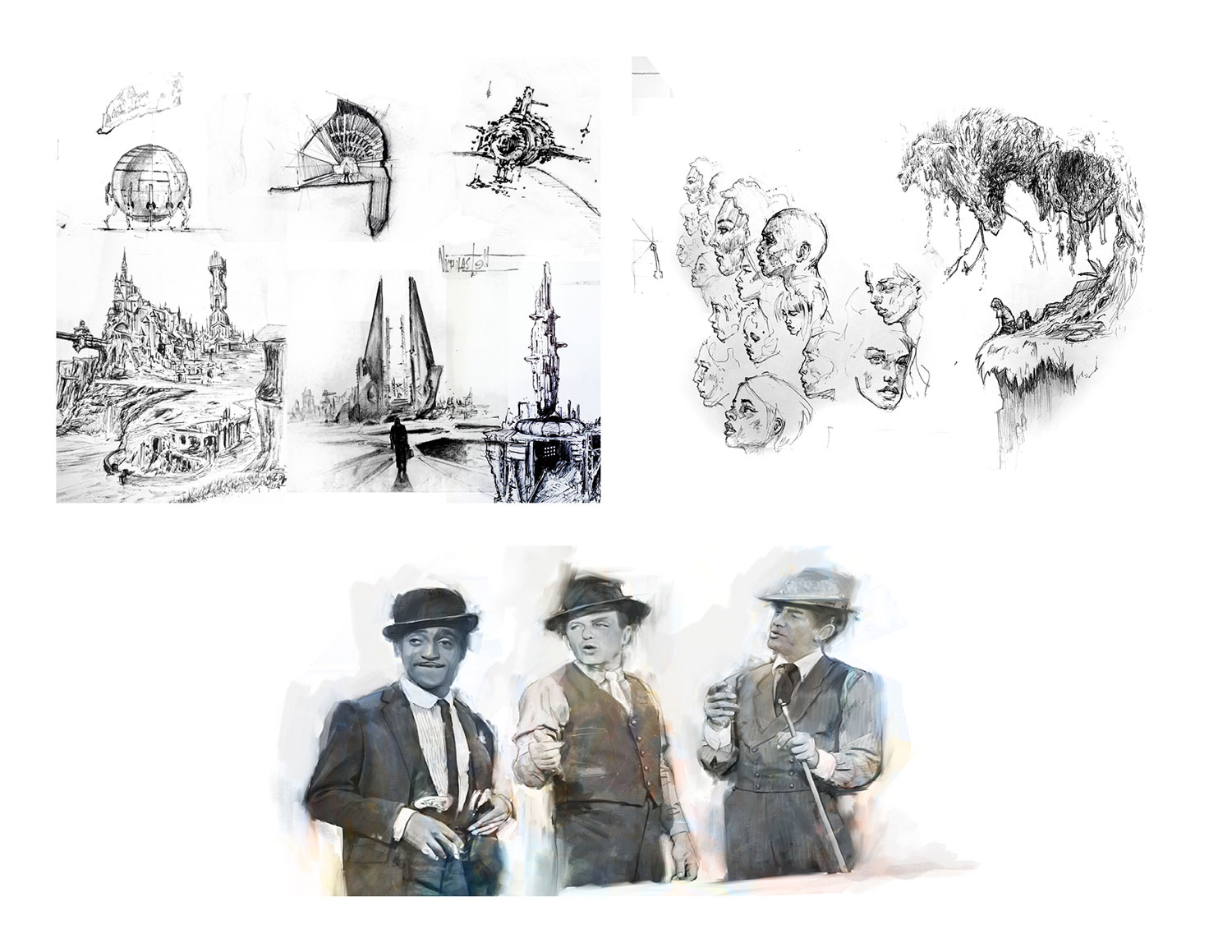
How do you spend time off the clock?
John – I spend my time off the clock with family, you can find me gardening, reading and of course drawing
Nicholas – In addition to watching college football, I do enjoy working out and I try to get to the gym once a day. I also appreciate long-form storytelling and all the mediums that deliver it. A Netflix show I really enjoyed was the Last Kingdom and I also enjoyed reading novels by Bernard Cromwell. Recently, I have also read a collection of graphic novels by artist Sergio Toppi, one of the most amazing pen artists I have seen.
Coffee or Tea?
John – Coffee for sure!
Nicholas – Coffee for me.
Favorite Sports Team?
John – Is it weird that I don’t watch sports? I enjoy playing sports more than watching them.
Nicholas – I love football. For college football, I support LSU, where I am from, and anyone that beats Alabama and causes Nicholas Saban to throw his head set. When it comes to professional football, I support the Saints and Bengals, any pro team that has a bunch of LSU players on it.
Describe ESa in Three Words:
John – Family for Life.
Nicholas – Family… family…. family but said in a Vin Diesel accent. No, seriously the people here are great, I feel like I made some lifelong friends working here.
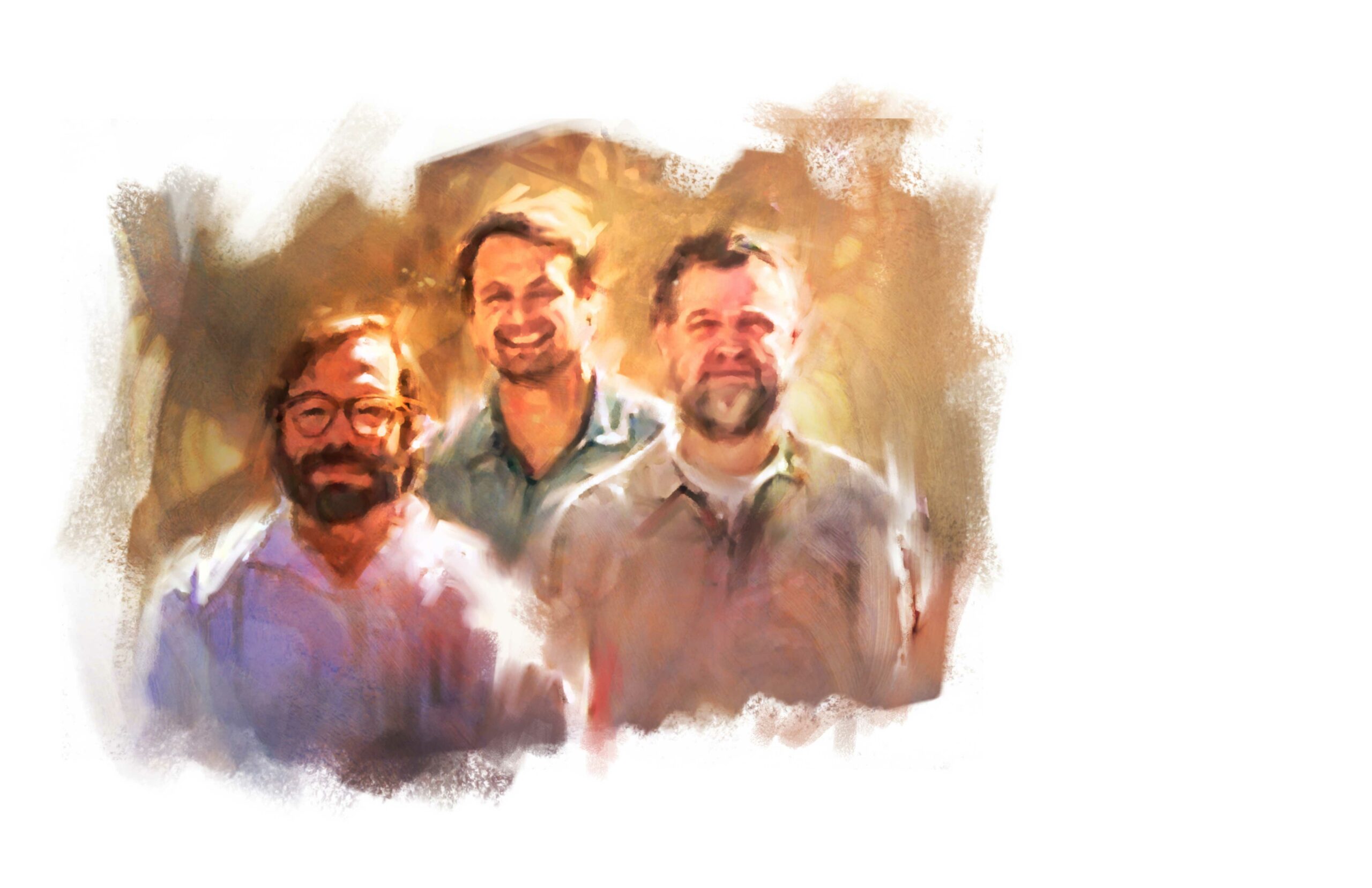
Cats or Dogs?
John – Dogs.
Nicholas – Dogs are my favorite.
First Job?
John – I remember walking to a strawberry farm with my older brother when I was 5 or 6. We got paid 10 cents for every carton full of strawberries we brought back to the farmer.
Nicholas – I have had many odd jobs, my path to architecture was not a linear progression. I believe my first job ever was working summers at a construction site. I did odd jobs like digging ditches and gathering materials, and I also worked at a pizzeria restaurant’s kitchen. I also worked as a field medic and a surgical tech for general surgery while in the military, and have worked offshore for an oil-well survey company.
Three Items on your desk you can’t live without:
John – Something to draw with, headphones and a cup of coffee.
Nicholas – Random sketch paper, I like to draw on a bunch of sheets and pencils. I like a soft lead pencil, specifically a good 2b sometimes even a 4b, and markers, I have a set of gray ones that I love. Moreover, John Henley himself. He sits directly next to my desk and seeing his stuff reminds me I need to do more sketching. In addition, Diana who sits across from me, is an insanely talent artist and seeing her work is inspiring.

Favorite city to visit/trip you have taken?
John – I don’t really have a favorite city. Most of what has made travel exciting for me are the people I am with and the different experiences I had with them in those places.
Nicholas – I am from New Orleans, and I love and miss that city. It has the best food and best people, but also probably the worst weather and the humidity is terrible. I took a trip to Italy in 2015 and loved Venice; Scarpa is one of my favorite architects and artist. A place I have never been and will definitely be going to in the near future is Kyoto, Japan.
Who (or what) are your artistic influences?
John – That’s a big question. There are a lot of great designers and artists. Artistically, I am influenced by everything around me. Good design can be seen everywhere. I think slowing down and taking the time to really understand a design that resonates with me has a more lasting effect than any one designer.
Nicholas – I have several influences. When it comes to historic architects, my influences include Luis Barragan, Kahn, Scarpa, Rem Koolhous, Alvar Alto, Otto Wagner and Mies. Inspirations that are working today include Tod Williams Billie Tsien, OMA, Big, Rex Architecture, Shop, Patka architects, Jonathon Segal, Olson Kundig and Peter Zumthor. Lastly, artists I love include David Grove, Frank Duvneck and James Gurney.